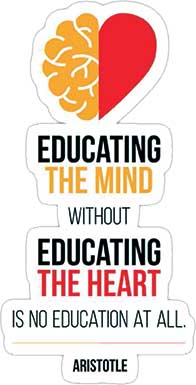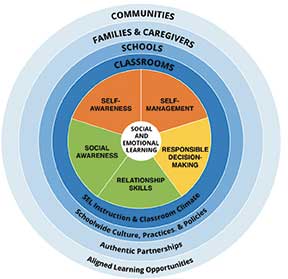Sheela Ramakrishnan

Sitting down to write this piece, took me around an unlearning, relearning and reflection process on several words that have been part of my life and defined me too. Education, school, study, learning, and educator – the first word was my vocation and the last is a big part of my identity. The words in between perhaps what my students and I did and continue to do.
I took the meaning for granted in a way that I understood it in my core – that of developing others and myself simultaneously. Literacy was a vehicle to achieve this. When I visited Mr Google for the sake of this article, I was amazed to see the various interpretations and variations to the words, particularly, education and schooling. The etymology of education showed educare – loosely interpreted to mean care for someone and impart knowledge, but the options for schooling ranged from the Greek version of – place away from work for discussion and reflection to another version that said: “Reprimand, reprove and to train and discipline strictly and thoroughly”. I couldn’t help feeling that we were still swinging between whether the school is a place to train and discipline and if so for what, or is a school a place for education and if so of what?
One interesting version that seems to sum up education quite comprehensively is from my oft quoted and expounded model of John Miller who talks about the interconnectedness among people, the world they live in, their own selves and the world yet unknown. This spiritual aspect of seeing the interconnectedness or wholeness of things in the curriculum has also been sweeping across educational institutions as one of the stronger ways to bring cohesiveness to a world that is increasingly fragmented in pursuit of self-aggrandizement.
It, therefore, becomes interesting against this backdrop to examine the role of these two words – education and school, and the expected outcomes of this process from educators and parents.
Some questions come to mind and perhaps together we can seek answers.
As a parent?
• Do I send my child to school to earn a living or make a life?
• Do I want a whole human being or one who gets top grades?
Or
• Do I wish to have a child who is fully rounded + a top grader?
• Do I as a parent realize that each child is unique and their strengths need to be focused on?
As an educator?
• Do I teach for completion of syllabus and completion of understanding of knowledge?
• Do I teach to make students learn how to navigate life?
• Do I measure my success on the number of toppers I turn out?
• Do I adequately analyze my student’s strengths and convey them to the parents?
For both parents and educators?
• Do we see each other as partners working towards the same goal?
• Are we on the same page in the interest of the child?
• Do we put our needs before those of the child?
In these answers lies the crux of what a school is supposed to do. Teach numbers and letters in breadth and length or play a role in the evolution of a human being who can use the head, heart and hands for the best welfare of all?
The topic was, should the school do everything? Or are there certain parts that lie outside the purview of the educator? To answer this let’s examine the sphere of influence that educators have vis a vis parents as a child grows through school.
A student spends 6 to 7 hours of a day through 10 years of schooling, an average of 9 months a year (after excluding holidays) in the company of his teachers and peers, about two hours in personal care, an hour on home study, an hour or two in play and other classes – that takes almost 12 hours of waking time. Add about 8 to 10 hours of sleep, which leaves about 2 to 3 hours in a 24-day cycle! How many parents, and that too working, spend 3 hours of quality time a day with the child? With devices becoming adept babysitters and companions, the human connection that is so necessary to navigate life joyfully is woefully inadequate. Understanding oneself and others and making wise choices is what education ought to be aiming for to create a well-balanced individual and a harmonious society.
In this context, the NEP has brought to sharp focus the integration of Social Emotional Learning (SEL) curriculum with the academic curriculum.
What is SEL? Is it the same as values? This understanding is necessary in today’s times where life does not run on black and white lines, but brings with it several shades of grey. Children in their early years would do well to know black and white well, before introducing them to grey areas and wise decision-making. Our values are our foundation, and our SEL skills show us how to navigate life using this compass.
The crucial question that most of us, as well as children are faced with is: what happens when there is a value clash? How does one take a decision then? These kinds of situations are not new to any of us; we meet them every day. We deal with it not with any readymade formula but just gut instinct or situational convenience. It is here that our navigational skills come to the fore and show us a path. For me the answer has always been to take a decision in favour of the greater value. My SEL skills help me make this choice.
The most accepted and popular model for SEL I found was the one from Collaborative for Academics, Social and Emotional Learning (CASEL: www.casel.org) Casel outlines clear parameters from classroom, school, family to community impact. The competencies are grouped under three main heads with five sub heads –
Self: self awareness and self management.
Others: social awareness and relationship skills.
Self: responsible decision-making skills that amalgamate the skills in the above two domains and propels into action.
The Casel wheel below illustrates this clearly.

Source: https://casel.org/fundamentals-of-sel/what-is-the-casel-framework/#social-emotional-learning
Each of these five domains has several competencies that align with 21st century skills as well as multiple intelligences. It is extremely simple to pick up competencies from each of these domains for curricular integration. This ensures holistic SEL development in the student.
How do we integrate SEL into the curriculum? Very few schools have dedicated time for life skills. Moreover, it is amply proven that the best learning happens in context. Therefore I believe that it’s easier to integrate these competencies while teaching itself – irrespective of the subject.
This will help us explore the curriculum from the inner world to the outer world – a more long lasting and sustainable impact can be made than dispensing mere knowledge.
Sharing some examples below, but every topic or activity in every subject can easily be connected to an SEL competency.
- Geography – volcanoes – SEL – bottling up emotions can be dangerous

- Math – decimals – SEL – appreciating the small and simple pleasures in life

- Science – Constellations – SEL – connect the dots and solve the problem

I hope these examples will provide a clue to the idea that I am proposing – of moving from inner to the outer world than vice versa.
Viewed from this angle, the question, “Should a school be an everything school?” My answer is yes. The reason: if we believe that schools are not mere providers of knowledge (that even Google can give) and we have the responsibility as educators to develop holistic human beings, then we cannot absolve our role in building SEL skills in students.
Aristotle said educating the mind without educating the heart is no education at all! Hence, let every school become an Everything School that makes us proud of being educators and bringing about an inner transformation in the lives of those who we touch. Let us partner with parents than being on either side of the wall. The child is OURs, not Yours or Mine.
The author is an advisor to schools in school transformation, curriculum development and classroom methodology. She is the co-author of four series of textbooks published by the OUP, a certified ISO 21001 auditor, a counsellor and trained e-coach for students with anxiety from the Stanford School of Medicine and trained in creative thinking in the UK and activity based methods of teaching in Malaysia and Thailand. She can be reached at sheelaforlearn@gmail.com.
Related Article
